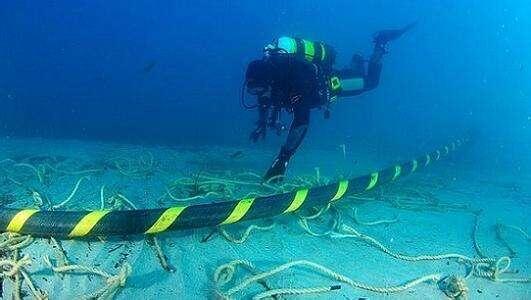TenneT develops innovative submarine cable with suppliers
Forty percent of the Netherlands’ electricity will come from offshore wind farms by 2030. TenneT will realise the grid connections for these wind farms. Alongside the eight 0.7 Gigawatts (GW) AC grid connections already planned, two 2 GW offshore grid connections will be built in the IJmuiden Ver wind energy area. And three additional 2 GW offshore grid connections in the LanWin and Balwin area will lift TenneT’s offshore grid connection capacity in Germany to more than 17GW until 2030. However a 2GW offshore grid connection is currently not existing. Innovation is needed and TenneT invited cable suppliers to develop these ‘next level’ submarine cable systems.

TENNET CONTRACTED 8 CABLE SUPPLIERS
TenneT has contracted 8 cable suppliers to develop a new standard for a submarine cable system. This new cable system is required for the planned 2GW offshore grid connections in the Netherlands (IJmuiden Ver) and in Germany (LanWin and Balwin) which set a new standard for connecting offshore wind farms. A 525 kV HVDC extruded submarine cable system with a 2GW capacity is currently not implemented in any project worldwide. The development programme should result in a certified cable system which TenneT can apply in the IJmuiden Ver, BalWin and LanWin projects as well as projects using the same power output and voltage. This will reduce costs and minimise spatial impact.
NEW STANDARD IN SUBMARINE CABLE SYSTEMS
The participating suppliers are:
· Hellenic Cables SA (Greece)
· LS Cable & System Ltd. (Korea)
· Nexans Norway AS (Norway)
· Ningbo Orient Wires & Cables Co., Limited (NBO) (China)
· NKT HV Cables AB (Sweden)
· Prysmian Powerlink Srl (Italy)
· Sumitomo Electric Industries, Ltd (Japan)
· Zhongtian Technology Submarine Cable Co., Limited (ZTT) (China)
“It is very positive to see that multiple international cable suppliers are participating in this programme. It shows that the sector is keen to innovate together to produce a new standard for submarine cable systems substantially reducing cost for society,” says Marco Kuijpers, Director Offshore Projects at TenneT.
DEVELOPMENT PROGRAMME
To link 2GW offshore grid connections to the onshore grid system, a suitable (new) certified cable system is required. This cable system will connect a 2GW platform and a land station. To transport the required 2GW power, a submarine cable system operating at a voltage level 525 kV DC using extruded insulation types is needed. All the participating cable suppliers will develop and test the cable system within the time frame for the 2GW projects and TenneT will be in close contact with them during the entire process. TenneT expects that the development of the 525 kV DC submarine cable system will result in a certified cable system in spring 2022. Following this path, the development programme enables both the developers and TenneT to deliver a new cable system cost efficiently and in time.
LESS SPATIAL AND ENVIRONMENTAL IMPACT
The need to develop this submarine cable system is derived from the expectation that it will reduce manufacturing and installation costs. Not only for the cable system itself but also for the entire grid concept, including the High Voltage Direct Current (HVDC) offshore platform and the HVDC land station. TenneT expects the bundled installation to achieve significant cost reductions. Besides reducing installation costs, it is also expected to reduce dredging costs because all cables can be put in a single trench. This approach also results in fewer platforms and land stations, which is not only interesting in financial terms but also ensures that TenneT causes lower emissions and has less spatial and environmental impact.
TAKING THE NEXT STEP IN THE ENERGY TRANSITION
TenneT is constantly looking to take steps in the energy transition that can contribute to the offshore targets of safely and cost effectively transporting offshore wind farms. Given the increase in size of the Ijmuiden Ver Wind farm and the distance to the nearest connection point, it was decided to apply the ‘new’ 525 kV 2GW grid concept. This is a logical move after installing eight standard AC connections in capacity of 700 MW, bringing the total installed capacity offshore wind connected by TenneT to 9.6 GW in the Netherlands alone in 2030. TenneT already has extensive experience with DC projects in Germany.
Source:Cable Technology News




